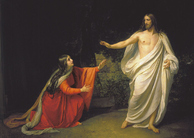Prompts for Progress: Feminism in the Islamic World
By
2010, Vol. 2 No. 03 | pg. 1/1
KEYWORDS:
From skimpy skirts to smoldering skivvies, American’s remember the 1960s as a decade of social change and assertion of the rights and strengths of women. True to American style, the women’s movement was fought and won boldly and bluntly in the public square. In the decades since, the western world has shifted its eyes to the Middle East and issues of gender rights in the Arab world. When compared to the standards of women’s rights that have recently been established in the western world, the rights afforded Muslim women by their religion and their governments appear appallingly oppressive. Full of pride of continued success towards gender equality in the United States, Americans offer self-assuming prescriptions for the course of gender rights in the Arab world. It is easy for westerners to demand such advancements while admonishing Islamic treatment of women as unequal. 
The popular press is full of accounts of oppressive and unequal treatment of women in Iran and Afghanistan. Both The Washington Times and The New York Times deliver scathing accounts of fundamentalist governments' revocation of women's rights measured by the largely western ideal of gender equality. Religious scholars would argue that within devoutly spiritual nations founded on Islamic principles, gender advancements could only take place within the framework of the Qur’an and the teachings of the prophet Muhammad. While scholars are able to provide a reconciliation of gender justice within Qur’anic pronouncement, their theoretical and largely semantic arguments have little effect on the realities of practical subjugation of women in the Islamic world. While the popular press documents practical information regarding the treatment of women in specific nation, their tone is wrought with assumptions that are indicative of western cultural attitudes. Both accounts provide their own distinct context for understanding the role of gender relationships in the Islamic world, yet their discussions so rarely cross that neither is able to benefit from each other’s lessons. In the western world, most citizens glean their understanding of foreign cultures from the popular press. Because of this, authors’ choice of words can play a powerful role in the shaping of readers' perspectives toward a particular group of people. Titles such as Noeleen Heyzer "Making a Nation Equal," published in the New York Times propose that the Islamic nation of Afghanistan be upheld to a western ideal of gender rights based on the assumption that men and women are equal.i Xin Li of the Washington Times paints a similar picture of Iran, another largely fundamentalist Islamic nation, demanding that women‘s rights be included in the western perpetuation of democracy in the Middle East.ii While Li provides statistics supporting some of the freedoms that Iranian women do enjoy, the overall tone of her article relies heavily upon an emotional plea, appealing to the western sense of equality and democracy. She quotes several leaders and representatives of international organizations and concludes with a powerful demand that the United States bring gender equality and democracy to the forefront of its presence in the Middle East. Islamic scholars argue that such demands of western newspapers and international organizations directly contradict the Islamic beliefs and understanding of men and women. The associate director of Harvard’s Center for the Study of World Religions, Jane I. Smith provides an Islamic perspective in her article entitled “Women in Islam: Equity, Equality, and the Search for the Natural Order” published in the Journal of the American Academy of Religion. She argues that the western desire for gender equality is not mirrored in the Islamic world. She further extends her argument to admonish westerners for assuming that their perceptions of practices in Islam and the Middle East are unjust because they cannot be reconciled with western definitions of equality. The liberation theologian Ashgar Ali Engineer of India agrees with Smith’s understanding of the Islamic perspective. He argues that it is human interpretation of the shari‘ah, rather than Qur’anic teachings, that have resulted in the oppressive practices sited by the popular press in Iran and Afghanistan. Rather than prescribing a western idea of democracy that demands a separation of church and state, as continually proposed by the popular press, these religious scholars argue that it is secular tradition that has negated the value and rights of women as dictated by the Qur’an and the teachings of Muhammad. These assertions of religious scholars strike an emotional chord within the American public. The United States was founded on the principle of an impenetrable separation between church and state. This founding principle serves as a key component in how westerners view both religion and government around the world and is implicit within popular press accounts of the Islamic world. In his New York Times editorial, Heyzer, the executive director of the United Nations Development Fund for Women, takes umbrage with the lack of inclusion of gender equality within drafts of the Afghan constitution. He hopes that inclusion of equal rights for women will put an end to the violence against women that has become commonplace in much of Afghanistan. He demands that the constitution include “clear language prohibiting any customs and traditional practices that discriminate against women.” Westerners that assume the separation of church and state to be a universal goal easily accept Heyzer’s demand as the only logical and just conclusion. In the United States, such separation was secured to ensure full freedom of religious practice. Heyzer blatantly ignores the Islamic principles of law that are revoked and denied by such separation. Within the Islamic world, law and religion are intertwined. The Qur’an is upheld as divine and accepted as the direct word of God as it was passed down to the prophet Muhammad. Muslims all over the world turn to the Qur’an for guidance in all of their earthly endeavors. Within an Islamic state, legislation is likewise guided by religious principles and ideals. Through interpretation of shari‘ah, the “eternal pattern that God has ordained for the universe,” Muslims follow strict laws devised as interpretations of this divine ideal. In order to achieve the world intended by it’s creator, Muslims first look to the Qur’an for guidance in not only religious practice, but legal affairs and social interactions.iii This intermingling of religious, legal and societal standards requires examination of any issue in the Arab world through the lens of Islam. Jane Smith examines this Islamic perspective in her essay entitled “Women in Islam: Equity Equality and the Search for Natural Order” published in the Journal of the American Academy of Women.iv Smith approaches the topic of women in Islam by initially attempting to shed her western assumptions about equality. She details the Islamic perspective as accepting the differences between men and women as “natural” and divine. According to her research into the Muslim world, Muslim men and women accept that they are inherently different and that women are subordinate to men due to their differing strengths. Both conservative and reformist Muslims from both genders consider this assertion divine and natural. She repeatedly reiterates that this notion of difference need not make women inferior, but simply more suited to different realms. She maintains that much of the subjugating customs are derived from secular cultural patterns rather than religious doctrine. Affirming the culturally accepted beliefs of innate inferiority of women, Smith address the Islamic perspective that man’s authority over women liberates women from responsibility and awards her protection. While Smith makes a conscious effort to lay her personal values aside, it is clear that her goal is to redefine terms utilized in Islamic principles surrounding women in a way that accommodates her personal beliefs of gender equality. Because of this, much of her arguments are based on semantics. The most obvious and persistent semantic argument throughout her essay is that of inequity versus inequality. While she admits that, “there have been genuine inequities in the relationship between men and women in Islam,” she repeatedly maintains that such accepted “inequities of condition” can be reconciled with equal status (Smith, 527). Through this argument, she is able to reconcile that men and women are afforded equal status within their separate domains outside and within the home (Smith, 528). This theory is reminiscent of the notion of separate but equal in reference to the African-American struggle for equal rights within the United States. A cursory examination of the history of civil rights in 20th century America shows that while such a notion does not necessarily dictate inequality it leaves many opportunities for exploitation of separate rights. Smith, however, never makes this comparison. While she challenges Arab practices that encourage social and political control over women, she attributes these practices to the secular values of male honor rather than religious values (Smith, 524). While secular values do contribute heavily towards the interpretation of religious dogma and shari‘ah, the Islamic acceptance of innate differences between men and women provides religious reconciliation of both social and political subjugation of women. The scholarly discussion of religious interpretation as informed by secular social context is expanded upon by Ashgar Ali Engineer in his essay entitled “Islam, Women and Gender Justice” published in the compilation What Men Owe to Women: men’s voices from world religions.v In defense of his proclamation that gender justice is not only reconcilable but also integral to the teachings of Islam, he maintains that interpretation is the root cause of the subjugating treatment of women perpetuated by Islamic governments. He challenges, “Scriptural pronouncements are a source of hope for the weaker and disempowered peoples, whereas theological formulations are weapons in the hands of powerful interests” (Engineer, 113). Clearly a believer in the teachings of Muhammad, Engineer accepts normative scripture as divine and immutable (Engineer, 118). He maintains, however, that some scripture is contextual and must be reassessed through current social contexts, citing Qur’anic references to slavery and the necessity to disregard them in a culture that has long since rejected indentured servitude. While Engineer’s arguments and examples allow for interpretation of Islamic law and pronouncements that benefit women, these same principles could be used to defend interpretations that have informed oppressive practices in fundamentalist nations. As the people within the Islamic world feel increased pressure from the western world to assimilate western culture, it could be argued that the current social context dictates a strict separation from such values in order to preserve Islamic culture. The practice of wearing a veil or hijab to cover a women’s face is a prime example of this. Engineer is quick to point out that veiling is not prescribed by the Qur’an, but is a largely secular practice (Engineer, 127). Yet to many Muslim women, the veil represents not the oppressive values of a fundamentalist regime, but the simultaneous rejection of western cultural influence and embracement of Muslim culture. Engineer’s use of Qur’anic verse and choice of translation further demonstrates the flexibility of his proofs that could be used to either support or contradict his claim. Quotes from the Qur’an as translated by Mulana Muhammad Ali, rely heavily upon semantic interpretation. He quotes a portion of translated verse 2:228 reading, “the rights of the wives (with regard to their husbands) are equal to the (husband’s) rights with regard to them…” (Engineer, 111). Another translation by M. A. S. Abdel Haleem translates the same verse as “wives have [rights] similar to their [obligations], according to what is recognized to be fair, and husbands have a degree [of right] over them…”vi These two translations represent very different interpretations of the verse. Ali’s interpretation clearly provides equal rights for both men and women. Conversely, Haleem’s translation provides some rights for women, but clearly implies that such rights are secondary to the rights of men. If we are to accept that there can be validity in an interpreted translation of the Qur’an as purported by Engineer, we must also accept the possible validity of Haleem’s interpretation. For those who seek reconciliation of gender equality and justice within Islam, it can indeed be found within both Engineer and Smith’s essays. Belief and practice however, are rarely informed by scholarly discourse. Believers rely upon their faith rather than theoretical evidence. Scholars’ theoretical analysis of the Islamic theology can help to provide an Islamic perspective to the international discourse of gender rights in the Arab world. It is impossible, however to extend such a perspective the entire Islamic world. As demonstrated by Engineer, there are countless interpretations of the Qur’an and varying opinions of how its teachings should be applied to law and practice (Engineer, 115). Selecting the interpretations favored by pro-feminist theologians results in an understanding achieved through a small narrow lens that exists more consistently in scholarly discourse rather than in religious and cultural practice. For empirical evidence of actual practice, we must turn to the popular press as our source of current events in the Islamic world. Such evidence however, is framed by pathetic appeals to western desires for a profoundly different group of people with little attempt to understand what they actually want. As tensions between the United States and Islamic nations grow, pressures from the western press and international organizations such as the United Nations to promote equality and justice in the region are sure to intensify. It seems at this point that the frame of reference for future involvement in the Muslim world will be democratization. While western intentions of democracy and gender equality for the Middle East could be viewed as altruistic in nature, imposing western beliefs upon cultures and governments negates the very definition of democracy. In much of the Muslim world, both democracy and feminism are associated with the capitalist imperialism that is admonished in the Qur’an and by Muhammad. Forced implementation of western values will only succeed in affirming this correlation and deepen animosity within the Islamic world for the western democratic ideals. Western insistence on separation of church and state is similarly misguided. While Americans pride themselves on this founding principle, the imposition of such a notion would not protect religious freedom, as was the original intent within the US constitution. Instead it would force nations founded on Islamic principles to contradict the Qur'an and would demand revocation of spiritual beliefs. An outside force cannot repair inequalities within any culture. The United States did not follow suit when Britain decreed that no man on the British Isles could be enslaved by another man. The United States had to come to its own conclusions and fight a bloody and devastating civil war to change the practices internally. Likewise, any lasting change in the Islamic world will have to take place within each individual nation on its own terms. As a woman who freely enjoys the rights of the western world, I write this conclusion with a heavy heart, for I too want a better life for the women of Afghanistan, Iraq and Iran. I recognize however, that I cannot know what a “better life” means for these women. We must accept that culture is ephemeral, constantly evolving. While support can be offered to those who choose to accept it, the course of any cultural change must be shaped internally. Endnotesi.) Heyzer, Noeleen. “Making a Nation More Equal,” New York Times. 3 December 2003: A31. All references to Heyzer are taken from this article. ii.) Li, Xin. “Iranian regime erases progress on women’s rights: fundamentalists enforce traditional sex roles under harsh penalties.” The Washington Times 8 March 2006: A13. All references to Li are taken from this article. iii.) “Islam.” World Religions: From Ancient History to the Present. Ed. G. Parrinder. New York: Facts on File Publications, 1983. 491. All references to Parrinder are taken from this textbook with page numbers noted parenthetically within the text. iv.) Smith, Jane. “Women in Islam: Equity, Equality, and the Search for the Natural Order.” Journal of the American Academy of Religion 47 (1979): 517-537. All references to Smith are taken from this article and noted parenthetically within the text. v.) Engineer, Ashgar Ali, “Islam, Women, and Gender Justice.” What Men Owe to Women: men’s voices from world religions. Ed. J. C. Raines & D. C. Maguire. Albany: State University of New York Press, 2001. 109-128. All references to Engineer are taken from this text with page numbers noted parenthetically within the text. vi.) Haleem, M. A. S. Abdel, The Qur’an: a new translation. Oxford: Oxford UP, 2004. Suggested Reading from Inquiries Journal
Inquiries Journal provides undergraduate and graduate students around the world a platform for the wide dissemination of academic work over a range of core disciplines. Representing the work of students from hundreds of institutions around the globe, Inquiries Journal's large database of academic articles is completely free. Learn more | Blog | Submit Latest in Theology |

















